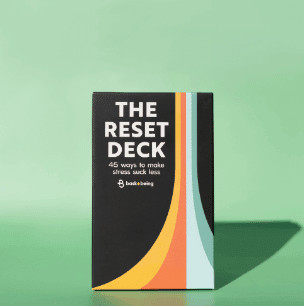The basics of burnout: what it actually is and why it matters
Are you burned out from hearing about burnout yet? And, still kind of confused about what it actually is?
You’re in good company.
There’s a technical definition of burnout endorsed by the highest medical court in the land, the World Health Organization (WHO). We’ll get to that in a minute.
First, we’re going to describe burnout using the words of people actually going through it. They tend to use words like:
- Exhausted
- Tired
- Stressed
- Overwhelmed
- Frustrated
- Impatient
- Depressed
- Unmotivated
- Apathetic
- Anxious
- Overworked
You get the picture.
Basically, burnout means that you’re exhausted and your nervous system is fried. Your body may be stalled in a sympathetic (fight, flight, or freeze) response. Said differently, it’s chronic stress. And, it’s specifically caused by work.
In 2019, the World Health Organization updated its definition of burnout to ‘a syndrome conceptualised as resulting from chronic workplace stress that has not been successfully managed’. Burnout is characterized by:
- feelings of energy depletion or exhaustion
- increased mental distance from one’s job, or feelings of negativism or cynicism related to one’s job
- reduced professional effectiveness.
In other words, burnout is currently the only health-related phenomenon that directly connects a human being’s wellbeing to their workload, work culture, and work habits.
Okay, but is it really that big of a deal? We live in a stressful world after all. Can’t we all just suck it up and adjust?
Fair question. It turns out, it is quite a big deal.
According to a 2015 study by Stanford Graduate School of Business professor, Jeffrey Pfeffer, over 120,000 U.S. deaths could be attributed to chronic workplace stress. Which, at the time, made it the fifth leading cause of death in the U.S.
This is serious. Especially considering that COVID-19 pandemic took burnout, already a slient epidemic, and made it even worse. Acccording to Lyra Health’s 2020 study of workers throughout the United States, about 40 percent of employees said they have experienced or been on the verge of burnout.
If burnout is the worst thing that happens to someone, they’re lucky. For many of us, it signals a final opportunity to change our lifestyle before our stress morphs into something more serious.
It’s also bad news for businesses. For one, burnout is expensive. It tends to disproportiantely impact highly engaged employees with specialized skillsets or diverse backgrounds, e.g. women and non-white and/or Mixed Race ethnic and racial backgrounds. This is especially poingnat during the Great Resignation, where amidst a slew of job offers and decent wages, low-wage-earning BIPOC employees find themselves stuck in a perpetual cycle of low income, high stress jobs.
Lucikly, burnout is preventable. And individuals can recover from it, if two conditions exist.
First, they’re willing to build new habits, mindsets, and skills to adjust how they operate at work.
Second, if they’re working for a company that is willing to address the business operations and cultural root causes that are driving burnout.
Bask + Being helps individuals, teams, and businesses do both.
Want to talk employee wellbeing and wellness strategies that, well, work? Join the conversation on LinkedIn.

